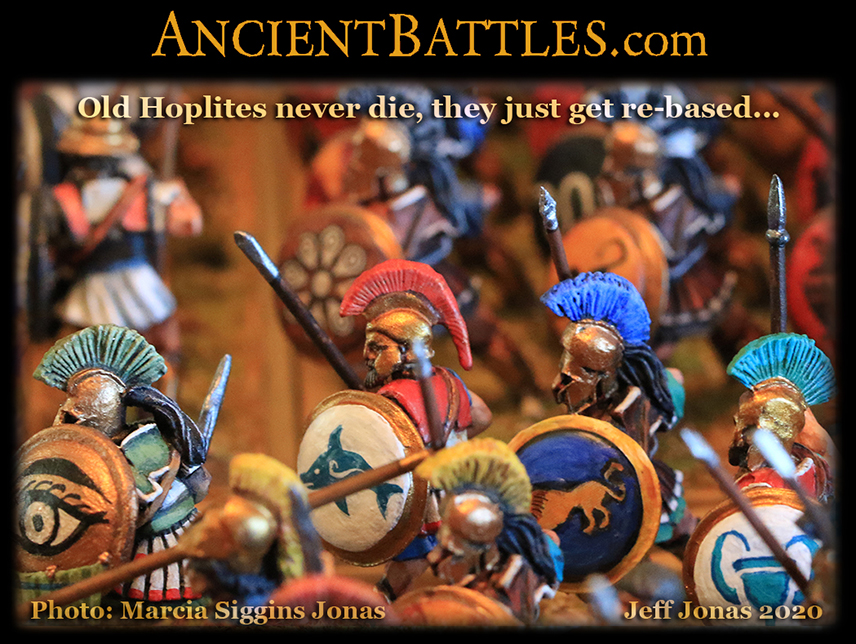
Old hoplites never die, they just get re-based.
|
Colors and Crests
This
Newline Designs trumpeter is standing in the back ranks as
colorful warriors push forward in the phalanx. |
 |
 |
| Mercenaries
These Wargames Foundry figures have been around for a long time. I call them mercenaries because they are wearing no body armor. This may be exaggerated as mercenaries probably could afford more armor than any typical soldier. There was a period in the Peloponnesian Wars where armor went out of style. But it appears that it came back. Helmet styles would change too. The heavy bronze Corinthian helmets hindered visibility and hearing, so the lighter conical "pilos" and other open faced styles became very common. The pilos was comfortable because it was styled after felt caps, it was cheaper and easier to make - three great reasons for the budget conscious hoplite to consider. The leather aprons were to attached to the shields block missiles or blows to the shins and knees. Uniformity is a rare thing, that's why I like the eclectic look. Mercenary Greeks could serve everywhere in the Mediterranean, from Carthage armies to Persians. These are very useful units because they fit in so many armies. I have a link to these as a "how to paint" page: HERE |
 |
|
Shield details
Shields
are a key part of the hoplite's look. The big round shields
offer a lot of painting room even in 28mm. This bunch has a
combination of hand painted designs as well as decals. Hoplite shields Luke Ueda-Sarson
|






Where do you want to go next? Click on:
Back
to AncientBattles.com Index
02/04/2020